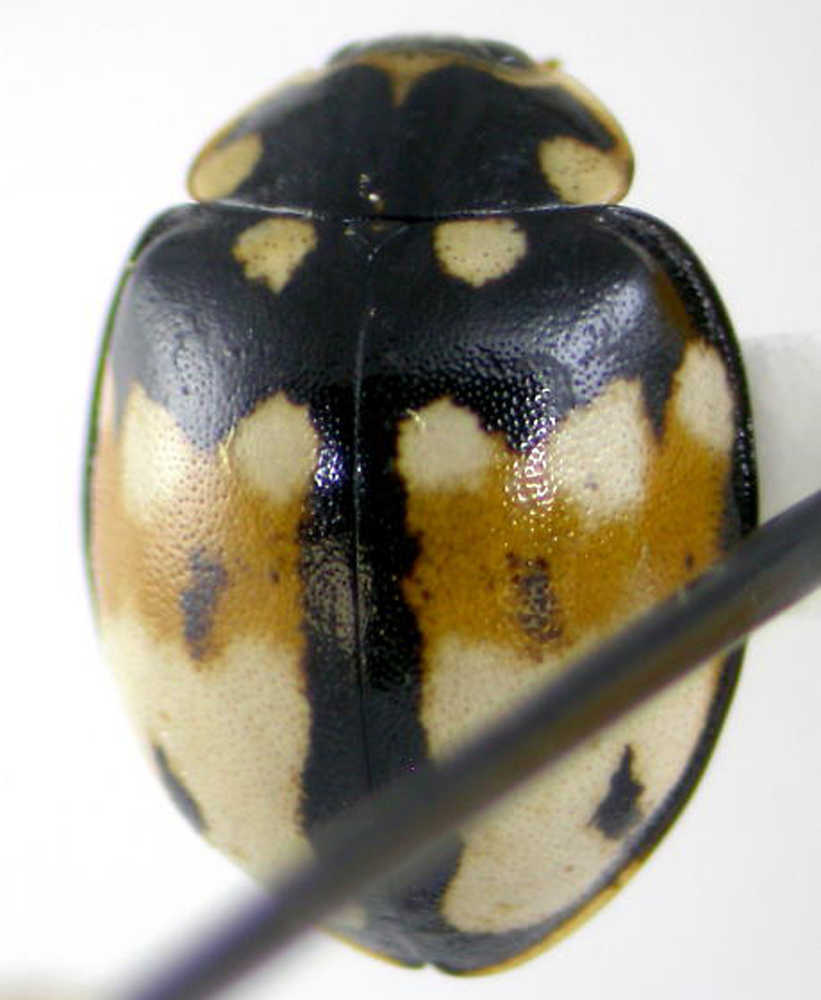Last week I actually lost sleep in excitement over receipt of our first set of “next-generation sequencing” data, our latest step in a years-long effort to overcome the taxonomic impediment. Yes, I am pretty nerdy, but this is my bread and butter.
As an entomologist, I was hired at the Kenai National Wildlife Refuge mainly to deal with this taxonomic impediment. Taxonomy, in the biological sense, is the grouping of living things based on shared characteristics as well as putting names on those groups. For many living things, assigning meaningful names to them is not easy. This difficulty and the barriers to overcoming it are referred to as the taxonomic impediment.
For example, in the summer of 2013, a Homer resident brought me several small, leaf-rolling moths that had been damaging her apple trees. I am no expert on small moths, so I promptly pinned them up and mailed them to a lepidopterist colleague. He sent them to a second lepidopterist who was able to assign them to the correct genus. They were then forwarded to a specialist on this group, who determined that they belonged to a new species to science, previously undescribed. I received this news a few days ago, well over a year after the moths had been brought to me, and still they will likely not receive an official name for a few years yet.
Similarly, it took considerable time, effort, and expertise to correctly determine that the sawfly contributing to decline of thin-leaf alder on the Kenai was the green alder sawfly, an exotic species from the Old World.
In these cases, the importance of knowing the identities of a potentially new pest of apple trees and an unfamiliar sawfly decimating our streamside alders justified the costs of correctly identifying them. We cannot afford to expend this much effort on routine identifications.
In recent years, the cost of identifications using DNA barcoding has come down to about $11 per specimen. Classical DNA barcoding is the sequencing of a short, standardized region of the genome for the purpose of species identification. Compared to identifications using morphology, DNA barcoding is well suited to immature, fragmentary, or even partially digested specimens that cannot be identified by conventional means. Even at $11, though, the cost becomes prohibitive when a single sample collected in the field may contain hundreds or thousands of insects, and all of the specimens must still be handled individually.
Within the last decade, “next-generation sequencing” (NGS) platforms have become available, hardware that can quickly sequence thousands of different strands of DNA simultaneously, potentially enabling thousands of identifications from a single mixed sample. What we’re talking about here is taking a single collection of insects, say from a sweep-net, grinding them up for analysis, and getting back a list of DNA barcodes that potentially represent all the species in that sample. However, making sense of the astounding quantities of sequences generated by these methods requires a reference library of DNA barcode sequences obtained by classical DNA barcoding of identified specimens.
For years now we have been building a reference library of DNA barcodes of insects from the Kenai Refuge with the express purpose of enabling identifications using NGS methods. Now that the cost of NGS processing has come down from nearly $1000 to less than $100 per sample, we recently submitted three insect-filled vials to an NGS lab as a trial.
The three samples yielded from six to 17 species identifications each, with many more sequences that either did not match anything in our libraries or were ambiguous. Mostly, the sequences lined up well with the vial contents I had recorded before submitting them to the lab. There was one unexpected identification of a fourteen-spotted lady beetle, a conspicuous, colorful beetle that I had not seen in the samples. It may have been present as a tiny fragment of beetle tissue, as lady beetle excrement, or as a meal in the gut of one of the other insects in the sample.
As NGS methods improve and as our library of identified sequences grows, the stage is set for asking and answering many questions about wildlife. Researchers have described microbial diversity from samples of soil, examined plankton assemblages from seawater, documented the diets of insectivorous bats from their guano, and even put together a list of plants eaten by extinct cave bears from plant DNA in their preserved scats.
Here on the Refuge, we can now quickly investigate the diets of insectivorous birds, mammals and fish from their droppings at a relatively low cost. An anticipated application is for routine monitoring of insect communities over time, where it is highly desirable to eliminate the time-consuming handling and identification of individual specimens the old fashioned way with a microscope.
Matt Bowser serves as Entomologist at the Kenai National Wildlife Refuge. You can find more information at http://www.fws.gov/refuge/kenai/ or http://www.facebook.com/kenainationalwildliferefuge.

